John Frederick Herring, Sr. (1795 – 1865)
Get a Herring Certificate of Authenticity for your painting (COA) for your Herring drawing.
For all your Herring artworks you need a Certificate of Authenticity (COA) in order to sell, to insure or to donate for a tax deduction.
Getting a Herring Certificate of Authenticity (COA) is easy. Just send us photos and dimensions and tell us what you know about the origin or history of your Herring painting or drawing.
If you want to sell your Herring painting or drawing use our selling services. We offer Herring selling help, selling advice, private treaty sales and full brokerage.
We have been authenticating Herring and issuing certificates of authenticity since 2002. We are recognized Herring experts and Herring certified appraisers. We issue COAs and appraisals for all Herring artworks.
Our Herring paintings and drawings authentications are accepted and respected worldwide.
Each COA is backed by in-depth research and analysis authentication reports.
The Herring certificates of authenticity we issue are based on solid, reliable and fully referenced art investigations, authentication research, analytical work and forensic studies.
We are available to examine your Herring painting or drawing anywhere in the world.
You will generally receive your certificates of authenticity and authentication report within two weeks. Some complicated cases with difficult to research Herring paintings or drawings take longer.
Our clients include Herring collectors, investors, tax authorities, insurance adjusters, appraisers, valuers, auctioneers, Federal agencies and many law firms.
We perform John Frederick Herring, Sr. art authentication, appraisal, certificates of authenticity (COA), analysis, research, scientific tests, full art authentications. We will help you sell your John Frederick Herring, Sr. or we will sell it for you.
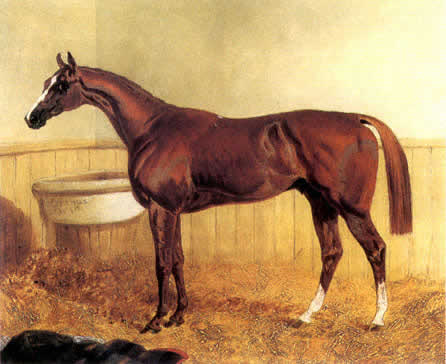
John Frederick Herring, Sr., also known as John Frederick Herring I, was a painter, sign maker, and coachman in Victorian England. John F. Herring, Sr. is the painter of the 1848 “Pharoah’s Chariot Horses” (archaic spelling “Pharoah”). He amended his signature “SR” (senior) in 1836, with the growing fame of his teenage son (1 of 4) John Frederick Herring, Jr.
Herring, born in London in 1795, was the son of a London merchant of Dutch parentage, who had been born overseas in America. The first eighteen years of Herring’s life were spent in London, England, where his greatest interests were drawing and horses.[1] In the year 1814, at the age of 18, he moved to Doncaster in the north of England, arriving in time to witness the Duke of Hamilton’s “William” win the St. Leger Stakes horserace. By 1815, Herring had married Ann Harris; his sons John Frederick Herring, Jr., Charles Herring, and Benjamin Herring were all to become artists, while his two daughters, Ann and Emma, both married painters.
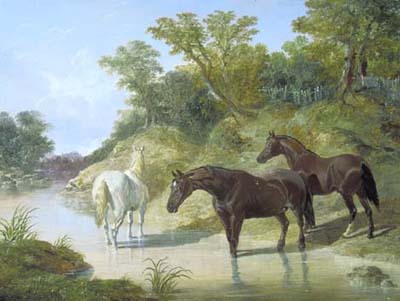
In Doncaster, England, Herring was employed as a painter of inn signs and coach insignia on the sides of coaches, and his later contact with a firm owned by a Mr. Wood led to Herring’s subsequent employment as a night coach driver. Herring spent his spare time painting portraits of horses for inn parlors, and he became known as the “artist coachman” (at the time). Herring’s talent was recognized by wealthy customers, and he began painting hunters and racehorses for the gentry.
In 1830, John Frederick Herring, Senior left Doncaster for Newmarket, England, where he spent three years before moving to London, England. During this time, Herring might have received tuition from Abraham Cooper. In London, Herring experienced financial difficulties and was given financial assistance by W. T. Copeland, who commissioned many paintings, including some designs used for the Copeland Spode bone china. In 1840-1841, Herring visited Paris, painting several pictures, on the invitation of the Duc d’Orleans (the Duke of Orleans), son of the French King Louis-Phillipe.
Returning to London in 1818, Hayter practiced as a portrait painter in oils and history painter. Dubbed ‘The Phoenix’ by William Beckford, Hayter showed a pomposity that irritated his fellow artists, but he mixed freely with many aristocratic families. His unconventional domestic life (separated from his wife, yet living with his mistress) set him apart from official Academy circles: he was never elected to the Royal Academy.
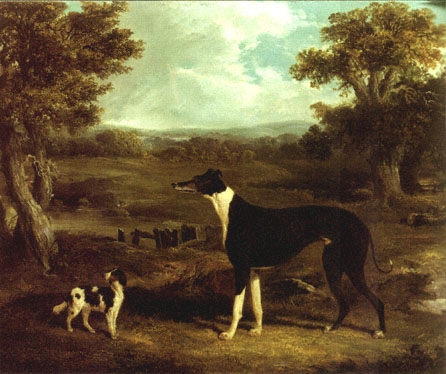
In 1845, Herring was appointed Animal Painter to HRH the Duchess of Kent, followed by a subsequent commission from the ruling Queen Victoria, who remained a patron for the rest of his life.
In 1853, Herring moved to rural Kent in the southeast of England and stopped painting horse portraits. He spent the last 12 years of his life at Meopham Park near Tonbridge, where he lived as a country squire. He then broadened his subject matter by painting agricultural scenes and narrative pictures, as well as his better known sporting works of hunting, racing and shooting.
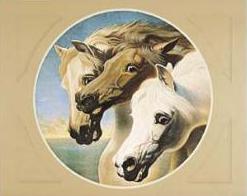
A highly successful and prolific artist, Herring ranks along with Sir Edwin Landseer as one of the more eminent animal painters of mid-nineteenth (19th) century Europe. The paintings of Herring were very popular, and many were engraved, including his 33 winners of the St. Leger and his 21 winners of the Derby. Herring exhibited at the Royal Academy from 1818-1865, at the British Institution from 1830-1865, and at the Society of British Artists in 1836-1852, where Herring became Vice-President in 1842.
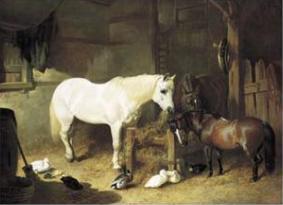
Herring created hundreds of paintings which were acknowledged during his lifetime. Still wondering about a painting in your family collection? Contact us…it could be by John Frederick Herring, Sr.
Reviews
1,217 global ratings
5 Star
4 Star
3 Star
2 Star
1 Star
Your evaluation is very important to us. Thank you.
